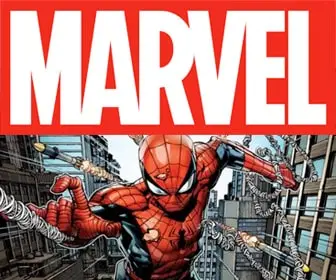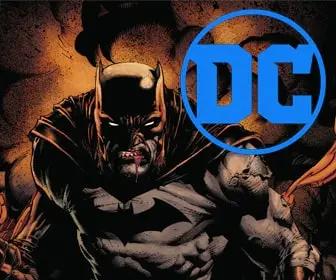
Shadows of Heroes: The Rise of Dark Comics
In the early 1980s, superhero comics were mostly bright and straightforward tales of good versus evil. Heroes like Superman and Batman always saved the day, and their stories were clear-cut and easy to understand. This was the norm until two talented writers, Frank Miller and Alan Moore, stepped onto the scene. They were not new to comics, but what they were about to do would change the world of superheroes forever.
Frank Miller was known for his intense and dynamic storytelling, while Alan Moore was famous for his deep and thoughtful writing. Both had unique styles that set them apart from other comic book creators. They were about to introduce a new way of telling superhero stories that was darker and more complex than anything readers had seen before. This new chapter in comic book history started with two groundbreaking works: “The Dark Knight Returns” by Miller and “Watchmen” by Moore. These comics didn’t just entertain; they made people think differently about superheroes. Let’s dive into how these comics came to be and how they reshaped the superhero world.
The Emergence of “The Dark Knight Returns”
“The Dark Knight Returns” is a comic book that took Batman, a well-known superhero, and showed him in a way no one had seen before. Created by Frank Miller, this comic presents Batman as an older, more troubled hero who comes out of retirement to fight crime in a future where things have gotten much worse in Gotham City.
The story is not just about Batman fighting bad guys; it goes much deeper. It explores his inner struggles, showing him as a complex character facing tough challenges. Batman is no longer just a hero in a cape; he is a person with fears and doubts, making him more relatable and real.
This comic also introduced a darker and more serious tone to superhero stories. The illustrations are bold and intense, matching the serious mood of the story. Cities are shown as grim and full of danger, reflecting the tough challenges Batman faces.
Because of its mature themes and more sophisticated storytelling, “The Dark Knight Returns” had a huge impact on how superheroes were seen. It proved that superhero stories could be more than just simple tales of good versus evil—they could tackle serious issues and challenge readers to think. This comic opened the door for more stories like this, where heroes are portrayed in more realistic and complex ways.
Alan Moore’s “Watchmen” Breakthrough
“Watchmen” is another revolutionary comic that changed how people thought about superheroes. Written by Alan Moore, this comic dives deep into the lives of its characters, who are not your typical heroes. They are complex individuals with personal problems and moral dilemmas, making them much more interesting and real.
The story of “Watchmen” is set in an alternate history where superheroes have existed since the 1940s. This comic doesn’t just follow one hero; it tells the stories of several characters. Each has their own background and reasons for becoming a hero, and their actions have significant impacts on the world around them.
“Watchmen” is famous for its unique structure. It mixes traditional comic book panels with excerpts from books, news articles, and other documents within the story. This style makes you feel like you are part of the comic’s world, giving you a deeper understanding of the events and characters.
The themes in “Watchmen” are serious and thought-provoking. It asks big questions like “What is right and wrong?” and “Do the ends justify the means?” By tackling these questions, “Watchmen” challenges readers to think about the role of heroes in society and the consequences of their actions.
Alan Moore’s “Watchmen” is not just a comic; it’s a rich, layered story that has had a lasting impact on how comics are written and understood. It showed that comics could be a powerful medium for telling complex and meaningful stories, much like the best novels and films.
Comparative Analysis
“The Dark Knight Returns” and “Watchmen” are both landmark comics that transformed the superhero genre, but they did so in different ways. Let’s compare how these two stories approached their themes and storytelling.
Firstly, both comics explore darker themes that go beyond the typical battles between heroes and villains. They look at the personal struggles and moral complexities of their characters. However, the way they tell these stories is quite different.
In “The Dark Knight Returns,” Frank Miller focuses on one main character, Batman, and his journey back to being a hero in a corrupt society. The story is very personal and centers around Batman’s internal struggles and the physical challenges he faces as an older hero. The comic uses a lot of action and intense scenes to show Batman’s fight against crime and his own limitations.
On the other hand, “Watchmen” by Alan Moore features a group of heroes, each with their own storylines. It’s more about how these characters interact with each other and the society around them. The narrative is complex, weaving together different points of view and exploring the broader impact of heroes on the world. “Watchmen” uses a mix of comic panels and text pieces, like diary entries and newspaper articles, to build a detailed world and delve into the psychology of its characters.
Both comics use their unique styles to challenge the idea of what it means to be a hero. “The Dark Knight Returns” shows us a hero who must face his age and the changing times, questioning whether his methods of fighting crime are still effective. “Watchmen” presents a world where the line between hero and villain is blurred, making readers question whether having heroes is good for society at all.
In summary, while both “The Dark Knight Returns” and “Watchmen” redefine superheroes as more realistic and flawed, they do so in their own distinctive ways. Miller’s work is a deep dive into one hero’s personal battle, while Moore’s creation is a complex look at an entire society influenced by multiple heroes. This comparison shows how versatile comic books can be in discussing serious issues and presenting multifaceted characters.
Legacy and Influence
“The Dark Knight Returns” and “Watchmen” have left a huge mark on the world of comics and beyond, influencing not just other comic books but also movies, TV shows, and video games. Their impact shows how powerful and serious comics can be as a form of storytelling.
After “The Dark Knight Returns” came out, many superhero stories started to take on a darker and more serious tone. Batman himself became a more complex character in later comics, often showing a darker side. This change also influenced how superheroes were portrayed in movies. For example, the Batman films directed by Christopher Nolan were heavily inspired by Frank Miller’s darker version of the character.
Similarly, “Watchmen” has had a broad influence. Its approach to storytelling and its deep, philosophical questions about power and morality have inspired many writers and filmmakers. The comic was turned into a major Hollywood movie in 2009 and more recently, into a critically acclaimed television series that continued the story in new ways.
Both comics challenged old ideas about superheroes and opened up new possibilities for what comic books could explore. They proved that comics aren’t just for kids—they can be complex, thought-provoking, and tackle real-world issues just as well as any book or movie.
Overall, the legacy of “The Dark Knight Returns” and “Watchmen” is seen in how much more mature and sophisticated comics have become. They helped shift the perception of comics to a form where serious themes and deep character development are embraced, making the medium richer and more varied. Thanks to these groundbreaking works, creators now see more possibilities in how they can tell their stories, pushing the boundaries of what comics can achieve.
Denouement
As we look back on the incredible journeys of “The Dark Knight Returns” and “Watchmen,” it’s clear that these comics are not just stories—they are milestones that have shaped how we view superheroes today. Both comics challenged the traditional views of heroism and opened up a world where superheroes could reflect real human emotions and dilemmas.
“The Dark Knight Returns” and “Watchmen” are more than just popular comics; they are essential pieces of comic book history that continue to influence new generations. Their stories have shown that comics can be deep and meaningful, capable of discussing complex issues just like any great literature.
Today, the themes of these comics are still relevant. They make us think about the role of heroes in our society and the impact they have on the world. These comics remind us that heroes can have flaws and face tough choices, just like everyone else.
In conclusion, Frank Miller’s and Alan Moore’s groundbreaking works have not only redefined the genre but also demonstrated the vast potential of comic books as a serious form of art and storytelling. Their influence remains strong, proving that great stories can come from anywhere, even from the pages of a comic book.












